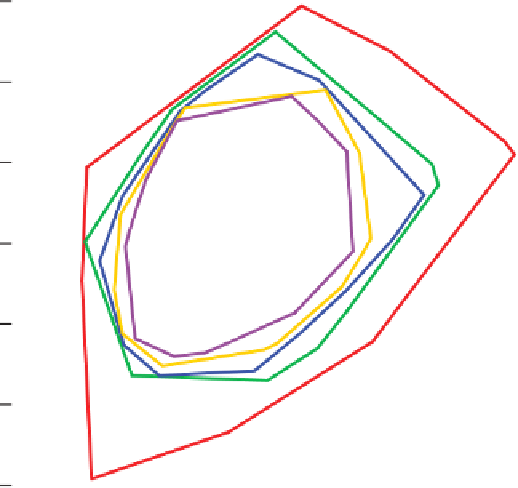Information Technology Reference
In-Depth Information
45
50
55
60
65
70
75
LGAN
Figure 2.35
Convex hull peeling for enclosing the two-dimensional configuration of
head dimensions variables
LTN
and
LGAN
.
Outliers can still adversely affect the shape of the area enclosed by the convex hull - for
example, the single observation with the smallest
LTN
value results in a convex hull with
a point towards the bottom left-hand side and no other observations in the vicinity. To
enclose only the area where the observations are concentrated, convex hull peeling could
be used (see Green, 1985). Once the convex hull which encloses all the sample points
is constructed, the sample points on the perimeter are designated the first convex layer
and removed. The convex hull of the remaining points is constructed and the samples
on the perimeter form the second convex layer. This process is repeated, removing the
samples on the perimeter at each stage, to obtain a nested set of convex layers. The
first five convex layers of the scatterplot of the head dimensions data set are shown
in Figure 2.35. This figure can be reproduced using the R function
chull.peeling
provided in
UBbipl
with the call
> chull.peeling(Headdimensions.data[,5:6], asp = 1, k = 5, pch = 16)
2.9.4 Bagplot
The convex hull encloses the scatterplot of the observations, but the area of concentra-
tion of the sample points is completely ignored. Whether the sample points are evenly
distributed or concentrated to one side with only a few scattered observations to the other

















































































































































































































































